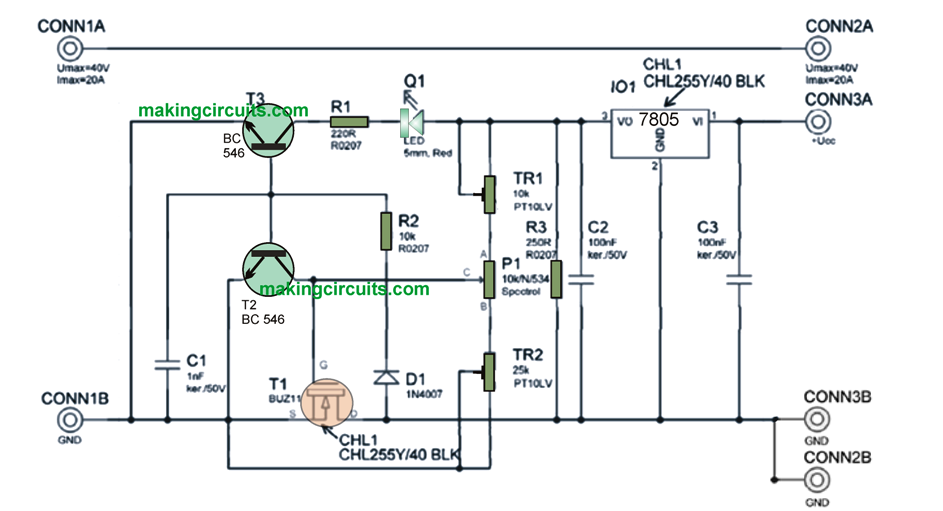Electronic circuit current fuse has gained popularity in recent times, especially when it comes to structured power resource and power assembled circuits. The classic fuse tube, which was quite popular once gets fused when placed on wrong PCB during testing, barring some hi-priced one. It is for this reason that many semi-conductors have lost their use and sunk in oblivion.
Keeping the aforesaid issue in consideration it is thus better to use those electronic fuse that are fast enough [100 times faster] and moreover where current flow can be managed flowing in to the load. While it is evident of the tremendous benefits using such fuse, a question obviously comes in mind as why it is not being used extensively in the power sources? The main reason for such factor is primarily for the cooling power element [BUZ11 Transistor]. When in normal state with the lock not in active mode the loosing of heat is minimal. This is for the switching transistor having low resistance. However, the scenario is getting different these days. With the activation event of the recent fuse, the power transistor gets assigned serially to a resistor to the path of the current flow. It is for this reason that losses what occurs during this state, becomes directly proportional to the voltage supply, thus setting up the constraint.

How it works?
The maximum current output of the fuse can be set to 10 mA (approx.). The maximum current that can be allowed is what the transistor can take (BUZ11 – 20A). The fuse used in the circuit has +5V of power supply along with a 7805 integrated stabilizer and reference voltage of +5V. Keeping this in mind, it is imperative that stability is one of the prime factors to an accurate measurement of current limit. The system is controlled by the potentiometer [here Spectrol 534 of 10 units are used. Alternatively, you can also use two potentiometers of which one can be used for adjust coarseness and the other to achieve clarity. In order to manage the constraints in current fuse, you can use a LED Diode Q1 [green].
Leave a Reply